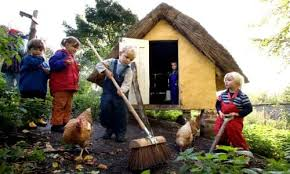There are many, many reasons why outdoor learning is excellent for children both in early years and throughout school. But in particular with the covid-19 pandemic and the need for space and fresh air, it is even more crucial.
One of the major issues within the city and indeed country wide is early language skills. The outdoor learning environment is ideal in developing this aspect of learning. Let us put the old adage front and centre of this article regarding weather. As Sir Ranulph Fiennes stated “there is no such thing as bad weather, just inappropriate clothing”. There is no good reason for children not to be in the outdoor learning environment regularly. To learn, play and talk and not to aimlessly run around without focus!
The EYFS (statutory document) has always stated “Providers must provide access to an outdoor play area or, if that is not possible, ensure that outdoor activities are planned and taken on a daily basis” EYFS framework 2019. And furthermore all 7 areas of learning can be accessed outside with many areas being the main vehicle to learning in the outdoor learning environment.
The chartered college of teaching has researched this area and commented “By the age of six, the majority of children are able to utilise the grammatical rules of language correctly, coinciding with their increase in vocabulary (Berk, 2001), and through interaction with other children, such as when participating in pretend play, they are able to advance their language skills.” The full article is listed below.
So what should be in the outdoor learning environment that encourages outdoor language and collaborative play. There will be many things missed on the list below but for a starting point I would suggest the following…
- Large scale loose parts equipment e.g. tyres, planks, cloth, tubes.
- Performance area for singing, dancing, music, nursery rhymes, talking and role playing.
- Role play areas for example a garden centre or bank.
- Areas based on stories that children can retell. (more on this later)
- Sand / water/ mud kitchen play areas
The example of linking stories to outdoor play is an excellent one. Take the example of the Julia Donaldson book “Zog” the friendly dragon. I have observed children in outdoor play constructing a wall to keep Zog safe through measuring, negotiating, counting, turn taking, discussing equipment; basically, communicating on a complex level. The same children then used the mud kitchen to make potions for Zog to make him breath fire. They cut the herbs in the garden, mixed, crushed, wrote lists of the ingredients, discussed the potion colour, smell, texture, and use. The children then, of course, feed Zog the potion with lots of encouragement. Finally, the children had to design a bridge with loose parts play for zog to move across the river safely. You can imagine the language rich environment you can only get from outdoor learning. If you want convincing more, please read the articles from Alistair Bryce Clegg, Helen Bilton, and Anna Ephgrave below.
The picture below is of a simple and cheap game that I have seen replicated time and again within outstanding settings. The aim of this Reception game is to role the ball down the pipe with the correct phoneme. When the teacher says the sounds, in this case “oi” sound. Making a large-scale game of phonics is also an excellent way to encourage reading, language and talking.
One thing is certain, a mix of amazing areas for children to explore, based on stories or role play, with lots of open ended opportunities and high quality and eager staff members, who promote the outdoors, is going to result in talkative and language rich kids! We want to avoid the situation highlighted by this science journal below. “The professionals perceived the indoor environment as being more secure and comfortable, so they avoided going outside for long periods. They were also afraid about possible accidents or diseases that might affected children”.
Indoor spaces can often feel overcrowded to certain children and naturally, they may feel intimated in this type of environment. The outdoors can help children to join in and ‘come out of their shells’. Giving children outdoor learning experiences offers them a chance to talk about what they have done with their friends, teachers, and parents, when home time comes.
So, if we want our children to be confident talkers. Those who thrive on storytelling, negotiating, interacting, turn taking, chatting, problem solving and developing. Then get them outside and go for it!


